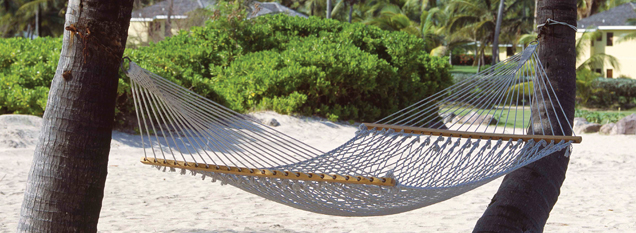An island of volcanic origin with large central peaks covered in tropical rainforest, Nevis lies at the top of the lesser Antilles archipelago, roughly 60 miles/96 km south of St Barts and St Martin, and 45 miles/72 km west of Antigua. It’s a land of plenty where wild donkeys, monkeys and goats roam free, and electric-coloured hummingbirds sup at the flowers of red hot Poker plants.
Twinned with the better known St Kitts, Nevis is just 25 minutes by boat across The Narrows between the two islands, or five minutes by helicopter. And minimal traffic on nevis is a luxury matched only by the ease with which all the surrounding islands can be reached. Be it by jet or yacht, the whole of the Caribbean is at your fingertips.
Breathtaking Views
Once the wealthiest island among its peers thanks to thriving sugar plantations, very little of this secret garden has been subject to development over the years. So whether looking back at the white misty clouds that wreathe the top of Mount Nevis’s 3,232 ft/985m peak, or down from high up in the rainforest to the palm-lined shore, the view of the island is never less than breathtaking. The main coast road was fully paved six years ago, and it takes just 40 minutes to traverse the whole of the island by car. A handful of charming blue signs lining the streets offer spiritual guidance.
Nevis’s growing tourism and agricultural trade, as well as offshore banking, provide the bulk of work, and the island boasts one of the highest literacy rates in the Western hemisphere. The reopening of the Four Seasons Resort in late 2010 following a devastating hurricane two years earlier breathed fresh life into the island’s economy. Providing a significant source of employment for Nevisians over the past 20 years, the luxurious 450-acre estate is one of the largest in the Caribbean, and is a proven haven for golf lovers and sun worshippers alike.
The Performing Arts and Conference Center, a multi-million-dollar development donated by the Taiwanese government opened its doors in 2012, while April 2009 saw work start on the island’s own geothermal plant. Although progress has been painfully slow thanks to the global economic crisis, this pioneering development when finally complete will enable Nevis to become 100 percent energy self-sufficient as well as opening export opportunities to other islands.
Rich History
Originally colonised in 1628 by British settlers from St Kitts, Nevis was subsequently fought over by the French and English, both wishing to lay claim to the island’s important spice route. Sugar was its primary export until 1900, when many of the mills were closed due to dwindling prices, and in 1983 Nevis achieved independence.
The island’s capital, Charlestown (named after england’s King Charles ii) carries a seamless aesthetic blend of Caribbean colour and colonial influence. Market days are Tuesdays and Saturdays, when bountiful rows of fresh fruit and vegetables are haphazardly displayed on rickety stalls. Meandering round the quaint town on foot is certainly the best way to fully appreciate its mix of old and new architecture, and will only take the best part of 20 minutes. But it’s the typical plantation houses that offer the most honest insight into times gone by. Nisbet Plantation, a former sugar and coconut plantation, is today an exquisite hotel with 36 intimate cottages scattered in its grounds and an impressive palm-lined lawn avenue leading up to the Great House. It is also where a young Horatio Nelson met his future wife Fanny Nisbet, and the couple were later married close by at the Montpelier Plantation Inn.
Across the water St Kitts, as the larger island of the two, has historically been the more frequented holiday location. With a population of 35,000 compared with Nevis’s 12,000 inhabitants, St Kitts offers a tropical paradise accompanied by bustling activity. Its capital city, Basseterre, is the centre of a thriving nightlife, while the more rural parts stand testament to a bygone era with windmill ruins and plantation houses dotting the landscape.
Superyacht Harbour
in 2012, a stunning new 2,500-acre development led by Kiawah Development Partners was launched, set to make the Federation of St Kitts and Nevis a top yachting destination. Christophe Harbour contains an impressive superyacht harbour surrounded by a village of five-star hotels, restaurants and boutiques. Carefully designed to have minimal impact on the island’s environment, shoreline and coral reefs, the natural harbour is sited on an old salt pond and is the largest in the Western hemisphere. Six spectacular beaches accompany private villas, a Spice Mill restaurant and a Tom Fazio golf course landscaped on Priddies Plateau. The stunning Beach House is adorned with cream linen curtains that sway in the sea breeze. The view down the wooden jetty straight across to the neighbouring island of nevis is particularly impressive in that special half hour at sunset, when pelicans artistically dive for fresh fish and the shift in light beckons the dawn of cocktail hour.







